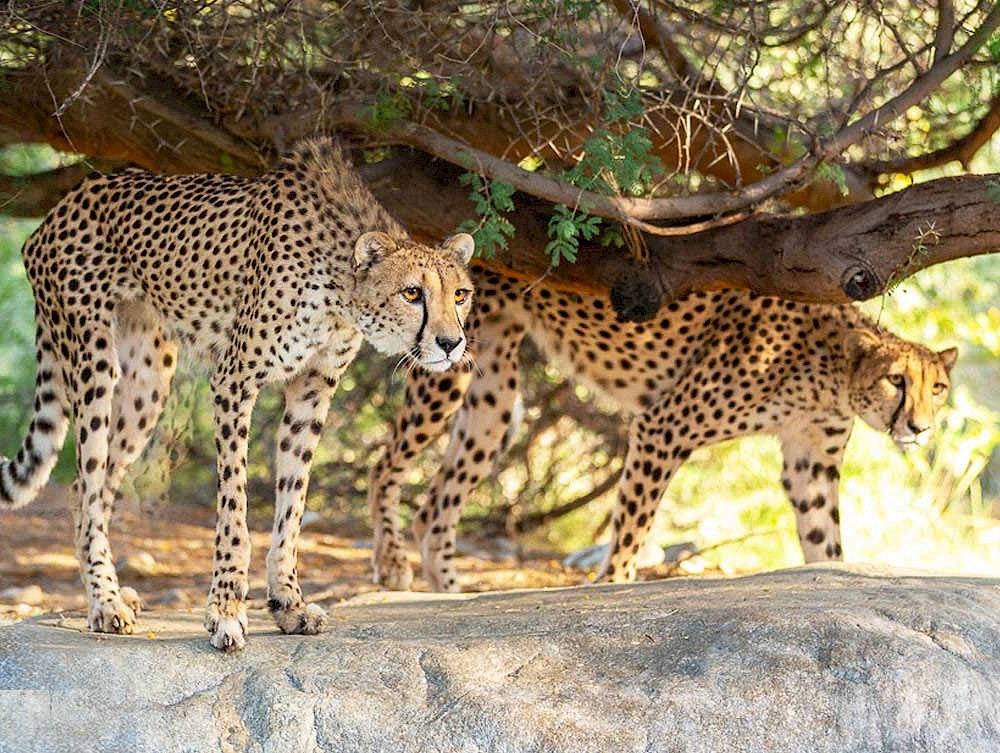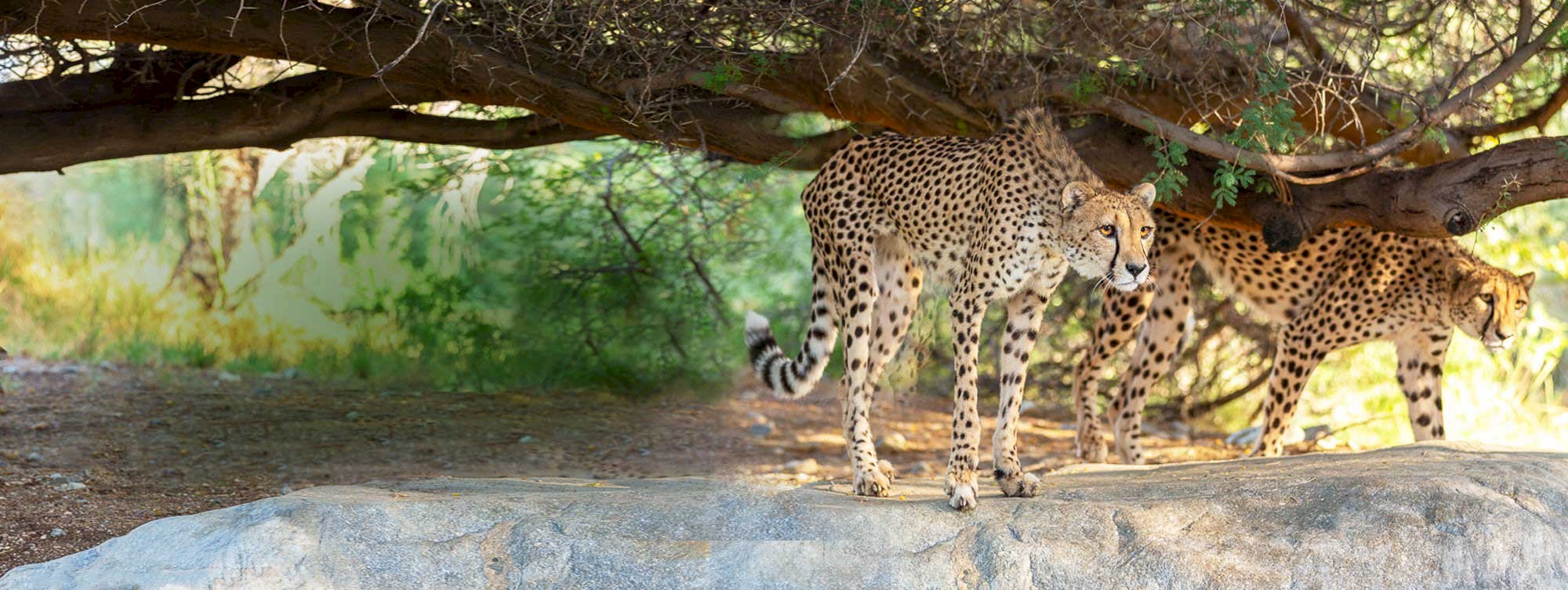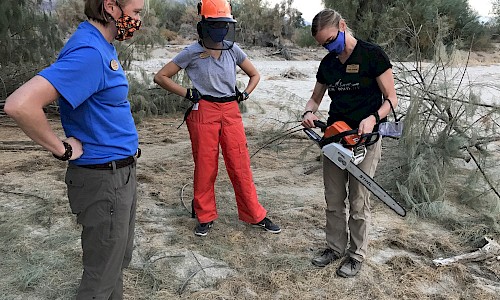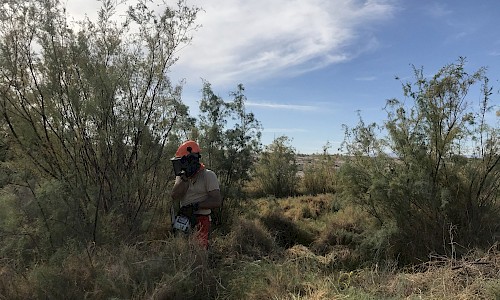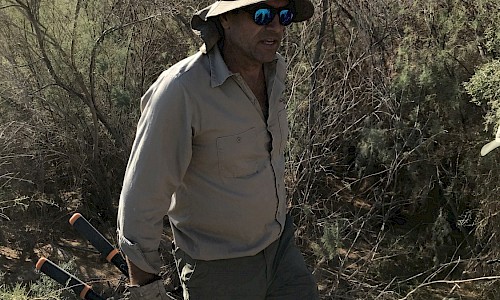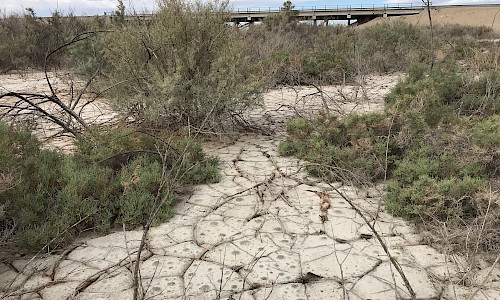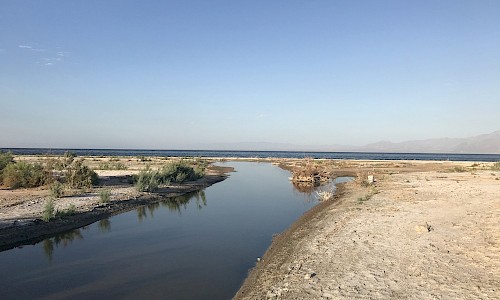Tamarisk Warriors
January 25, 2021
Lucky for myself and The Living Desert, two of our intern-turned Conservation Department staff members happen to be born and raised ranchers. Mary and Emily (or Lou we call her) Thomas are as field ready as they come, complete with a passion for conservation and years of hands on experience using chainsaws. After a few weeks of Natalie Gonzalez, Dr. James Danoff-Burg and myself out at Salt Creek removing tamarisk, Mary and Lou joined in and sped up our restoration with power and grace.
Now with a solid team of four, Natalie, Mary, Lou and myself – and Dr. James joining in when his full schedule permitted – we made an efficient assembly line of chainsaws, herbicide and hauling cuttings of tamarisk away from the creek. With the chainsaws, we made sure that our PPE (personal protection equipment) was always on, with the machine cleaned and well oiled. The herbicide was a combination of four different solutions, all mixed with proportions that matched guidelines for herbicide use on BLM land and within manufacturer restrictions. Ultimately the herbicide had a blue dye in it, which made the application onto a cut tamarisk stump satisfyingly visible. We made sure to move the cuttings out of the flood zone for the creek, such that they didn’t wash into the creek and create any unnatural dams.
It all sounds quite simple. I had originally imagined it to be like cutting tamarisk that you see on the side of the highway or lining a golf course fence. Trees on dry, sturdy ground. That mental image of Salt Creek’s tamarisk had come from visiting the downstream portion near the delta with the Salton Sea. There the banks were dry, the creek itself just a couple winding fissures in the ground. The tamarisk grew out of the dry ground, its tough roots tapping into the water below.
But in our section of Salt Creek, the creek spread wide, flooding the area just past the upper train trestle. Tamarisk sprouted from its banks, but also on islands within the creek, or directly out of the creek itself. On our three day trips out to the creek, staying at an odd Airbnb in Bombay Beach, we would structure our trip with, “How wet do you want to get today?” On the first day, we might move along the bank and adjacent scrub, cutting tamarisk with our feet and boots happily dry. But by the second half of day two, and all of day three, we were in and out of the water. Sometimes it was by stepping onto some wet marsh grass, only to find out there was nothing solid underneath, plunging knee length into the water. Sometimes it was standing right in the winter cold creek bed, calves fully submerged, to cut away tamarisk growing over the creek, and inaccessible from other angles. Carrying the tamarisk away from the creek was always a challenge, lifting bundles of 12 foot long cuttings onto our shoulders, and moving them upland and away from the creek. With each new pile of tamarisk cuttings, and each new stump of tamarisk cut, we felt the progress we were making for this restoration.
The Salt Creek project will continue after migratory bird season ends, as birds are currently flocking to the creek for nesting and stopovers.
We thank Coachella Valley Mountain Conservancy for the funding of this project, and thank the Bureau of Land Management and the California Department of Fish and Wildlife for their generous collaboration.






